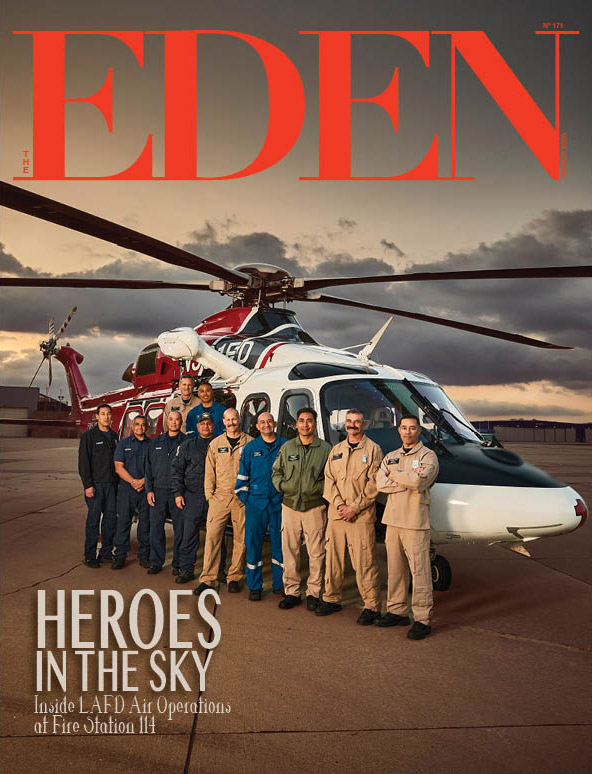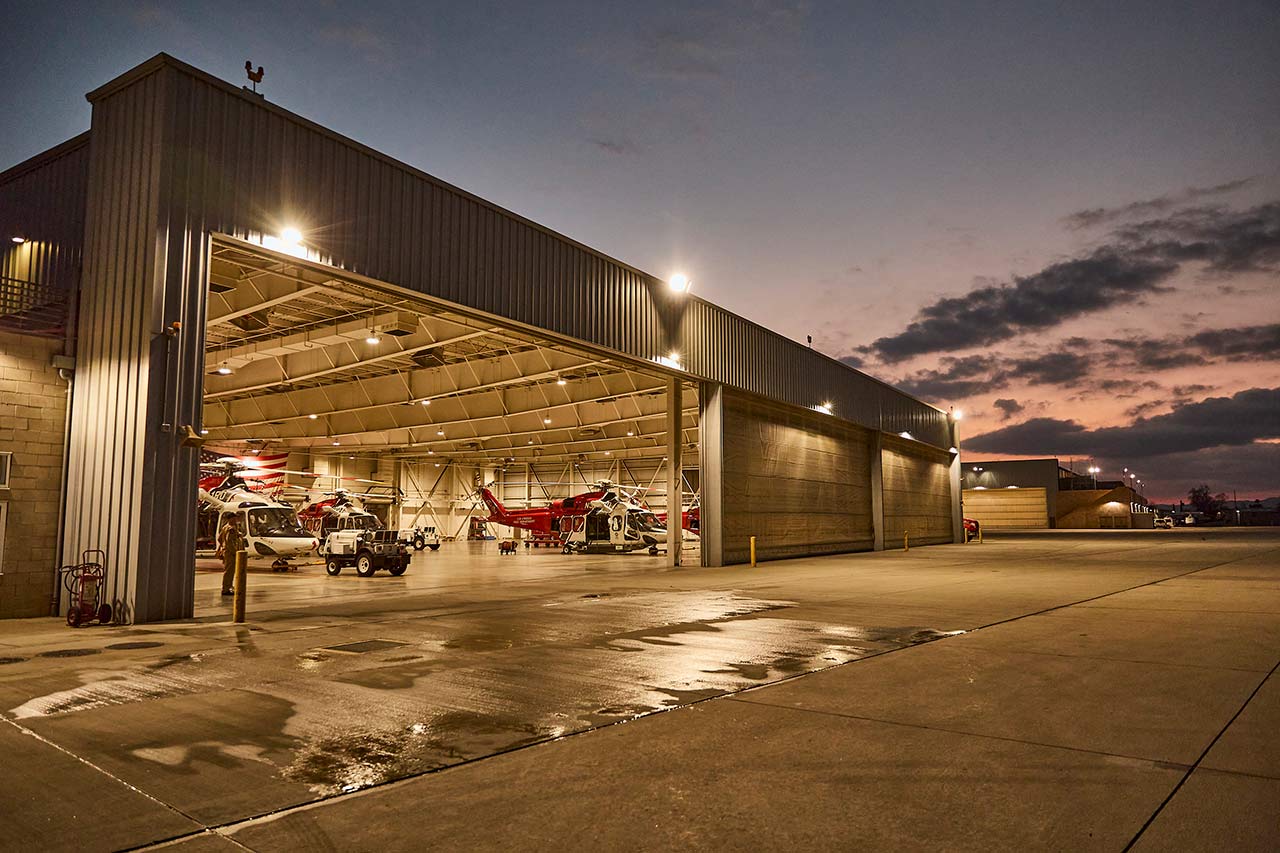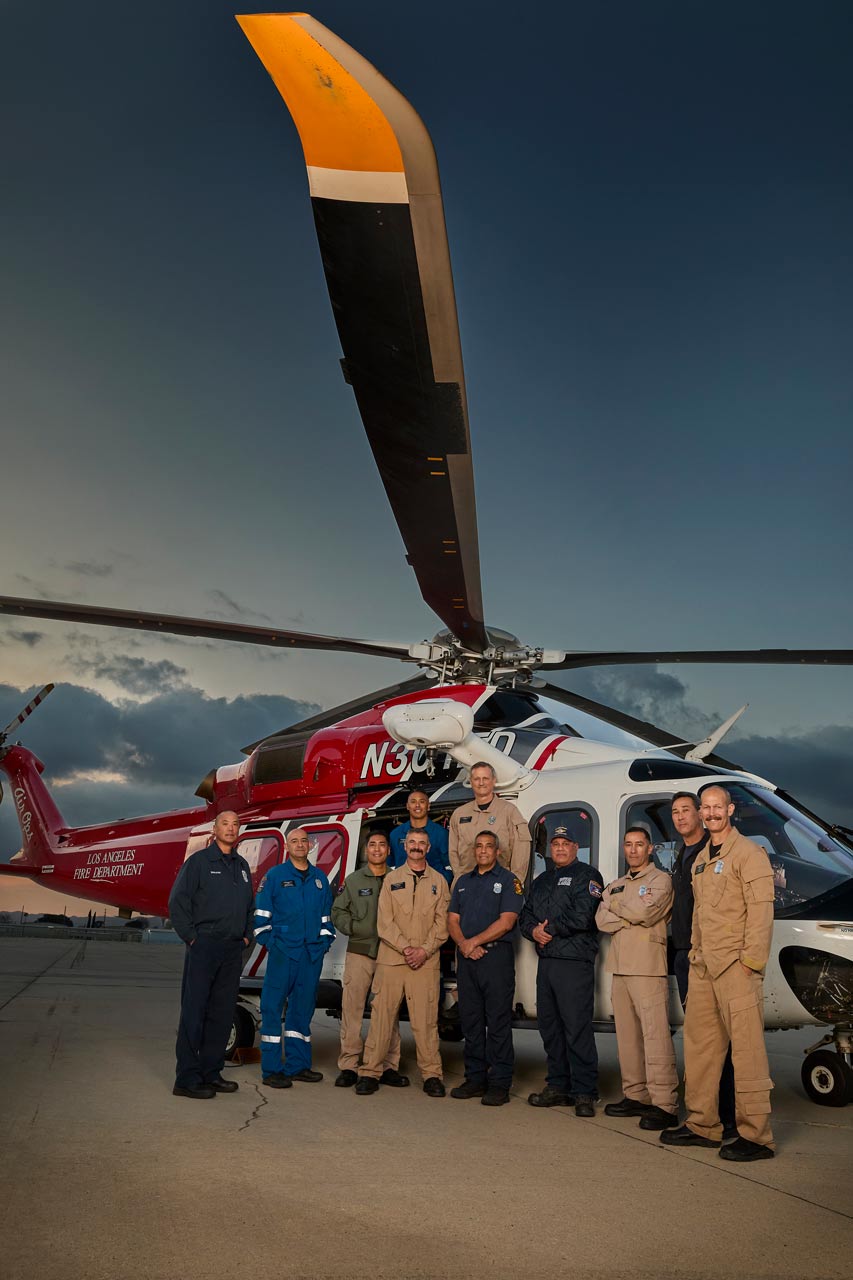
Hero’s in the Sky
Inside Los Angeles Fire Dept. Air Operations at Fire Station 114
The historic deadly fires that pummeled areas of Los Angeles in January turned beautiful and landmark neighborhoods into massive fireballs, destroying everything in their path. Countless homes and businesses were reduced to ashes, entire areas of lush forests burned to a crisp, and 29 people perished, not including the countless pets and wildlife species.
The harmful effects of the toxic smoke and bad air quality that permeated the air for days were noticeable inland and all along the coast for miles and miles.
All Angelenos felt a collective sense of shock, sadness, and fear.
Read Our Magazine…
As the fires raged on and Los Angeles was brought to its collective knees, the one thing we were all grateful for was our beloved Firefighters, who came from far and wide, including Firefighters from our neighboring borders, Canada and Mexico. They were present to keep us safe and get us through a nightmare most of us had never seen before. But thanks to those incredible men and women who were on the front lines the fires were contained. We all owe them a huge debt of gratitude. This is why it is an honor for us to feature the Firefighters LAFD Fire Station 114, the Air Operations Section, in this March issue of The Eden Magazine.
We visited LAFD Fire Station 114, the Air Operations Section, in person to gain insight into how the field has evolved, the challenges firefighters face, and what the public should know about their critical work.
We learned a lot and appreciated that they took time out of their day to meet with us. Firefighting is a profession that demands physical endurance, mental resilience, and a deep commitment to protecting lives and property. They serve as first responders in emergencies ranging from structural blazes to wildland infernos, often risking their lives for the safety of others, and for all of this and more, we say thank you from the bottom of our hearts.
We spoke with Air Station 114 Firefighters to gain insight into how the field has evolved, the challenges firefighters face, and what the public should know about their critical work.
The Evolution of Firefighting Technology
How has firefighting equipment technology and equipment changed over the years?
Firefighting technology has advanced significantly over the years, greatly enhancing safety and effectiveness. Modern firefighters now rely on thermal imaging cameras to detect hotspots and locate victims in smoke-filled environments. Additionally, advancements in personal protective equipment (PPE), such as lighter and more heat-resistant turnout gear, have improved mobility and endurance during rescue operations. Communication tools have also evolved, with digital radios and GPS systems ensuring better coordination during emergencies.
Moreover, fire suppression methods have progressed, with new foams and chemical retardants helping contain fires faster, particularly in wildland firefighting. Unmanned Aerial Systems, UAS or drones are now being deployed to assess fire conditions from above, providing real-time data to crews on the ground. These technological improvements have made firefighting safer and more efficient than ever before.

The Most Essential Quality for an LA Firefighter
When looking for Firefighters to join the LAFD, what is the one quality that all firefighters living in LA should possess?
While firefighting requires a wide range of skills, physical strength, technical expertise, and quick decision-making, the most crucial quality every firefighter in Los Angeles should possess is adaptability. Given Los Angeles’s diverse challenges, from high-rise fires to brushfires in the hills, firefighters must be able to adjust quickly to unpredictable conditions. The ability to remain calm and problem-solve under extreme pressure is what defines a truly effective firefighter.
Coping with the Mental and Emotional Toll
How do you cope with the mental and emotional stress of the job?
Firefighting is not just physically demanding. It takes a significant mental and emotional toll as well. Firefighters regularly witness traumatic events, from devastating house fires to life-threatening medical emergencies. To cope, many rely on peer support systems, such as talking with fellow firefighters who understand the stress of the job.
Departments also provide access to mental health professionals, counseling services, and critical incident stress debriefings after particularly traumatic calls. Additionally, staying physically active, practicing mindfulness, and engaging in hobbies outside of work help firefighters maintain emotional resilience. Support from family and friends is also crucial in managing the stress that comes with the profession.

The Underappreciated Aspects of Firefighting
What aspect of your work do you feel is underappreciated?
Firefighters do far more than respond to burning buildings. They are trained in emergency medical services, often arriving before paramedics to provide life-saving care. They also handle hazardous material incidents, perform search and rescue operations, and assist in disaster response efforts.
One aspect firefighters feel is often underappreciated is the amount of training and preparation required. Firefighters spend countless hours honing their skills through drills, simulations, and continuing education to ensure they are always ready for any emergency. The public sees the heroic rescues but not the grueling training behind the scenes that makes those rescues possible.
Urban vs. Wildland Firefighting
What are the biggest differences between fighting fires in urban areas versus wildland fires?
Fighting fires in an urban setting versus a wildland environment presents vastly different challenges. In cities, firefighters battle high-rise and residential fires, where access to water hydrants is more reliable, and crews can reach emergencies quickly. These fires often involve rescues, navigating enclosed spaces, and containing the blaze before it spreads to neighboring buildings.
In contrast, wildland firefighting demands a different approach. Fires spread unpredictably, fueled by dry brush and wind conditions. Crews must rely on helicopters, air tankers, and firebreaks rather than hydrants to contain the flames. The physical demands are also greater, as firefighters often work in rugged, remote terrain for extended periods. Understanding fire behavior in each environment is key to effective firefighting.
A Memorable Call with an Unexpected Outcome
I’m sure you have many heroic stories to share, but please share with us one memorable call you responded to where you thought the outcome was going to be dire, but instead turned out to be positive and unexpected.
One of the most rewarding aspects of firefighting is when an emergency call results in a positive and unexpected outcome. Firefighter 114 recalls a time when their crew responded to a house fire where a family was trapped inside. Upon arrival, the team quickly entered the smoke-filled home, locating a child unconscious from smoke inhalation. After pulling the child to safety and performing CPR, the child miraculously regained consciousness before being transported to the hospital.
That moment made all the training, the long shifts, and the hardships worth it, firefighter 114 shared. Seeing the family reunite was a reminder of why we do this job.
A Lifelong Commitment to Service
Firefighting is more than a job it is a calling. Firefighters risk their lives daily, not for recognition, but out of a deep sense of duty to protect their communities. Their work requires continuous learning, mental strength, and unwavering teamwork. As firefighting continues to evolve with advancements in technology, one thing remains unchanged: the dedication and courage of those who serve on the front lines.
The Firefighters at Fire Station 114 insight remind us that behind every emergency call, there is a team of highly trained professionals ready to respond, often under the most challenging conditions. Their sacrifices deserve not only appreciation but also the full support of the communities they protect.
The Eden Magazine team stands in solidarity with the communities of Palisades and Altadena who have lost their homes and loved ones.
Our hearts go out to you and to the wildlife that perished in this devastating wildlife.

Special Thank you to:
Brett Willis -The Section Commander, Battalion Chief
Jorge Arevalo – Pilot 4
Cherif Amin – Pilot 3
Johnny Romero – Pilot 3
Brent Ruff – Pilot 3
Kyle Brantner – Pilot 1
Dom Marquis – Paramedic
Dave Hernandez – Paramedic
CRASH guys
Tony Cardona – Apparatus Operator
Chuck Harward – Apparatus Operator
Todd Shiraiwa – Engineer
Jon Resendez – Firefighter
JSquared Photography @j2pix – photography
Raphael Berry is the owner of Berri’s Kitchen

Comments